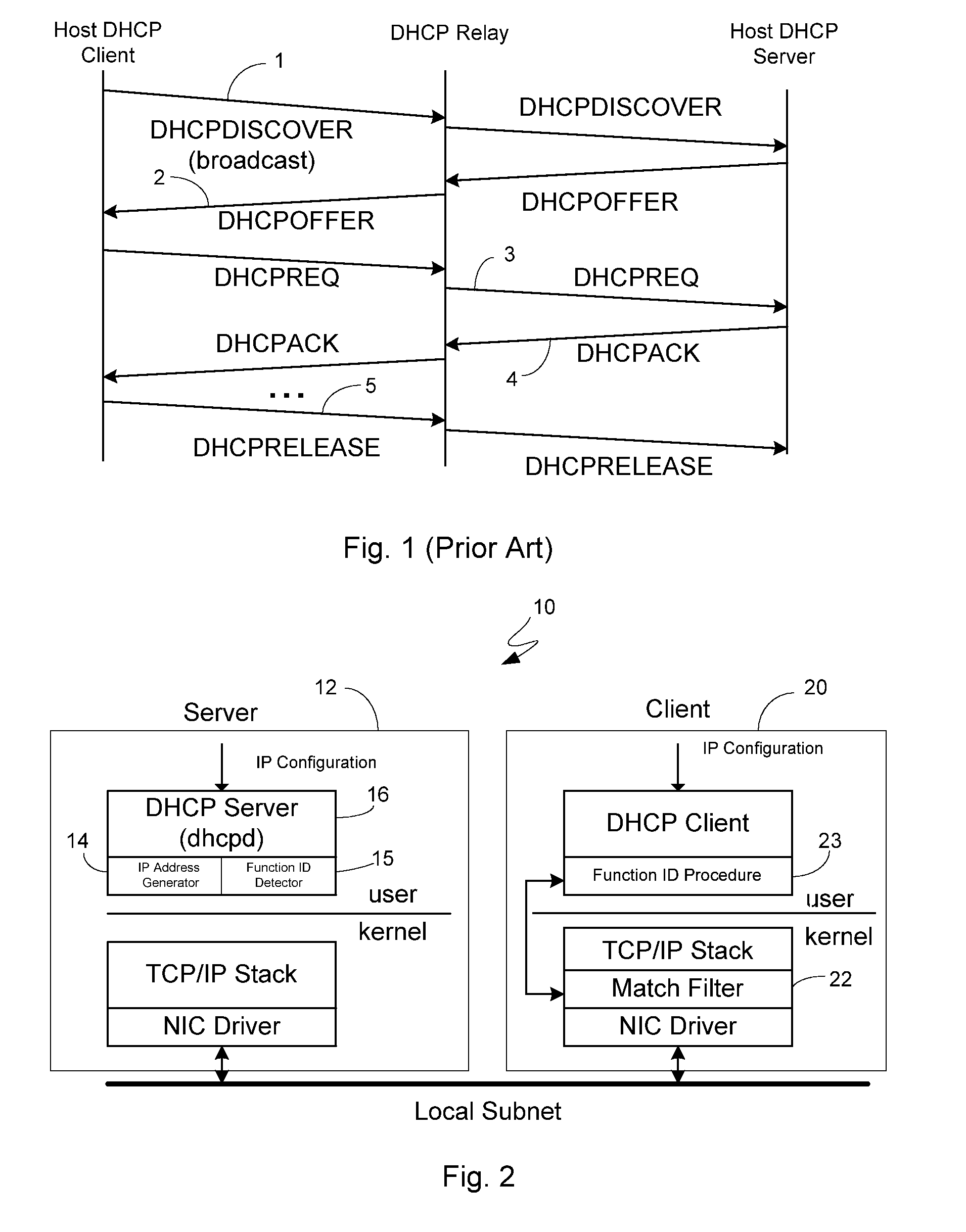Security Enhanced Methods And System For IP Address Allocation
- Summary
- Abstract
- Description
- Claims
- Application Information
AI Technical Summary
Benefits of technology
Problems solved by technology
Method used
Image
Examples
Embodiment Construction
[0027] To address the exploitable security vulnerabilities noted above in the Background section, the present invention relates to an algorithm for use in enhancing DHCP to promote a more secure address allocation model. In this way, the algorithm can be used in conjunction, for example, with DHCP for early network intrusion detection, detection of worms and virus propagation, network scanners, and SPAM.
[0028] The model itself borrows principles from Code Division Multiple Access (CDMA), which is a technique for transmitting simultaneous signals over a shared portion of a spectrum. Spread spectrum is a fairly new technique for channel allocation. Prior to CDMA, other technologies in use were frequency division multiple access (FDMA) and time division multiple access (TDMA). In FDMA, channels are allocated from a fixed frequency base and allocated to communcation channels. In TDMA, the time slots are divided for communication devices. From a security standpoint, communications which...
PUM
 Login to View More
Login to View More Abstract
Description
Claims
Application Information
 Login to View More
Login to View More - R&D
- Intellectual Property
- Life Sciences
- Materials
- Tech Scout
- Unparalleled Data Quality
- Higher Quality Content
- 60% Fewer Hallucinations
Browse by: Latest US Patents, China's latest patents, Technical Efficacy Thesaurus, Application Domain, Technology Topic, Popular Technical Reports.
© 2025 PatSnap. All rights reserved.Legal|Privacy policy|Modern Slavery Act Transparency Statement|Sitemap|About US| Contact US: help@patsnap.com



